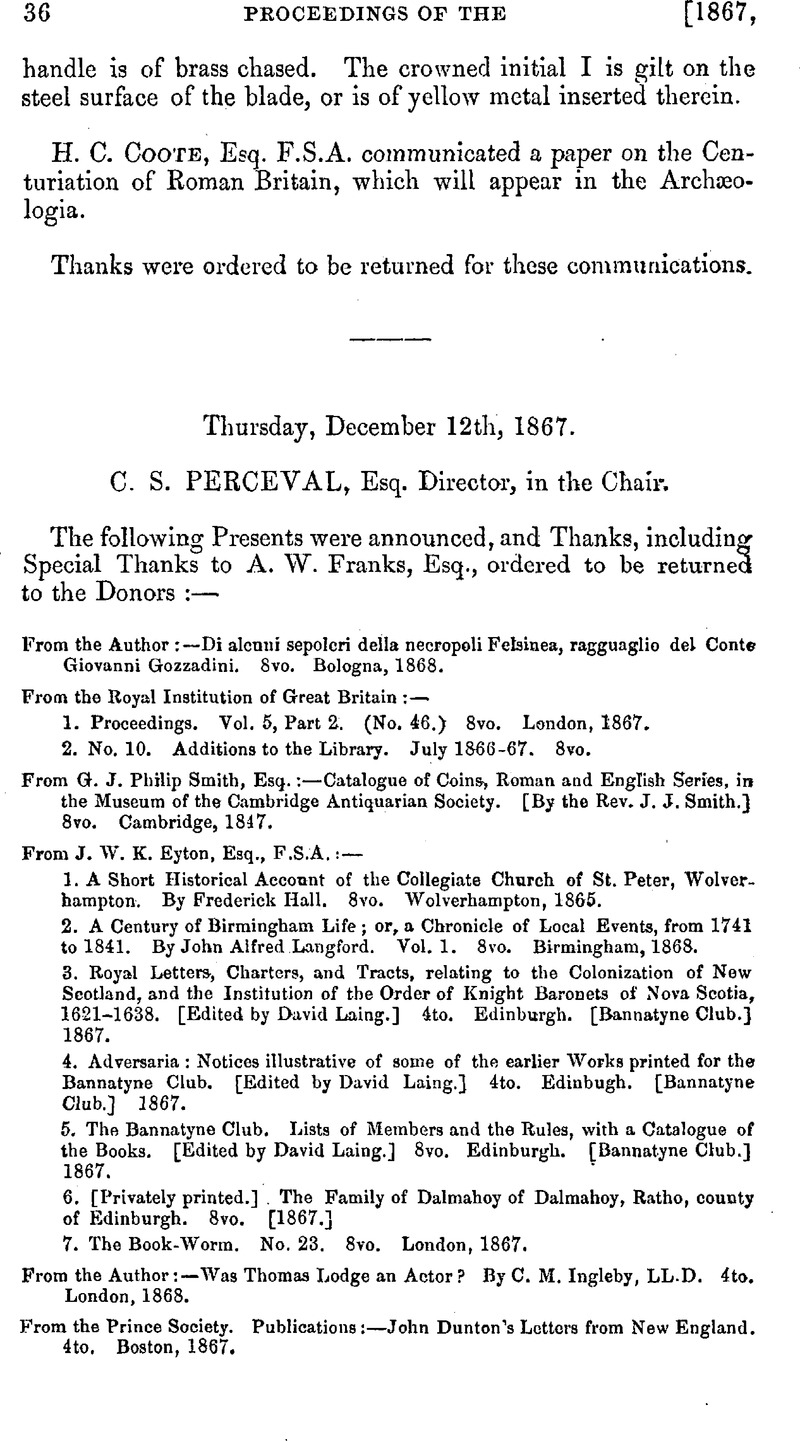No CrossRef data available.
Published online by Cambridge University Press: 10 May 2010

page 39 note * Dur. Rat. Dis. Off. lib. vii. c, 35, De Officio Mortuorum.—“Deinde ponitur (corpus) in speluncâ, in quâ in quibusdam. locis ponitur aqua benedicta et pruina cum thure. Aqua benedicta, ne dæmones qui multum earn timent, ad corpus aceedant.”—See also Archæologia, xxxviii. 336, for Mr. Akerman's notes on the discovery of vessels calculated for holding liquids in Anglo-Saxon graves.
page 41 note * In the first account given by De Rossi (Bull. Arch. 1867, No. 3) no mention occurs of this bust. My explanation was given in the octave after the Festival of St. Peter, and in the presence of the persons I have already named. In his second account we read “it is possibly Charlemagne or one of his next successors.” I take no account of Louis the Pious, nor Lolhaire, but consider it to be indubitably Charles the Bald.